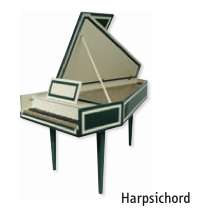cr3ator84 wrote:perform a 'turn' in Notion 3?
This is a new musical term for me, so I checked wikipedia, and I like it! 
I did a quick check of the NOTION 3 palette and user manual, and I did
not find any information on turns, so I think that you have to do it explicitly . . .
THOUGHTSFor the folks who might not know about turns--which includes me until approximately 30 minutes ago--this is the musical symbol for a turn, and it instructs the musician to do a particular type of ornamentation, although the specifics appear to vary depending on the context . . .

[
NOTE: This is an example of using the turn symbol as a type of shorthand or whatever . . . ]

[
NOTE: And this is one way that a musician can play the turns . . . ]

[SOURCE:
Musical Ornament (wikipedia) ]
While I was not aware in an immediately conscious way of this particular type of ornamentation with respect to its having a specific music notation symbol, I like the concept of ornamentation, and it is something I work on every so often toward the goal of memorizing a nice subset of ornamentation techniques for use when composing and playing lead guitar solos in real-time on the fly, since I think there are enough basic types of ornamentation to use a few of them as standard finger patterns, which generally is the way I classify and use standard types of lead guitar phrases . . .
I like to listen to this bit of FUN by Mozart, which I consider to be the definitive catalog of practical ornamentation, in addition to being brilliantly hilarious mind candy . . .
"Twelve Variations on 'Ah vous dirai-je, Maman'" (Mozart) -- MIDI Grand Piano ]
The perspective here in the sound isolation is that regardless of how smart and skilled one might be, there is no way that anyone actually can keep track of all the notes in the Mozart piece without using mnemonics, which also is the case for playing the notes, hence the key is to commit the patterns to memory essentially by obsessively repetitive practicing until you can do it in your sleep without needing to give it any thought in an immediately conscious way, and the fact of the matter is that the only way to do this is to rewire the Frontal Eye Fields (FEF) region of the brain, since the FEF region of the brain can handle processing auditory information in the range of 24 milliseconds to 60 seconds, which is vastly faster than the Auditory Cortex processes auditory information, which for all practical purposes puts the upper limit at approximately 40 notes per second, which is a bit mind-boggling but doable once you discover how to get in touch with your inner idiot savant, where from a curiously enlightening colloquial perspective, this is the way that composers, musicians, and singers do things literally "off the top of their heads", since anatomically the FEF region of the brain is bounded by Brodmann areas #4, #6, and #8, which are at the top center of the brain, which among other things is one of the best clues to the fact that people know a
lot more information than they are aware of in any immediately conscious way at any given moment, which is a bit mind-boggling, really . . .
[
NOTE: Once you do the requisite finger exercises and assorted researching and studying, which the key aspect of rewiring the FEF region of the brain, the unconscious mind knows all this stuff, and the way to tap into the resulting knowledge is to discover how to let the unconscious mind run the show for a while, which mostly is a matter of suspending conscious thought and judgement in a very specific way, which here in the sound isolation tends to be enhanced by not wearing underpants . . . 
]
 Frontal Eye Fields (wikipedia)Mind-boggling! NOTION 4 AND COMPUTED ORNAMENTATIONI have no idea if NOTION 4 is going to support this, but (a) it is an intriguing idea and (b) over the long run it certainly makes sense . . .
Frontal Eye Fields (wikipedia)Mind-boggling! NOTION 4 AND COMPUTED ORNAMENTATIONI have no idea if NOTION 4 is going to support this, but (a) it is an intriguing idea and (b) over the long run it certainly makes sense . . . From the perspective of software engineering and algorithm designing the difficult aspect will be deciding how to do it in a practical and sensible way, which should include the ability for the composer to specify and fine-tune a set of parameters, because intuition strongly suggests that there are enough variations to make it a bit frivolous to do it only a few ways without allowing fine-tuning and so forth . . .
Yet, there obviously is a way to do it by specifying parameters and so forth, because it can be transcribed to MIDI and then played under computer control, hence there is an algorithm, although identifying and defining the algorithm will be a bit of work, but FUN work, and Mozart provided the necessary clues in the the late-18th century, for sure . . .
For sure! 




